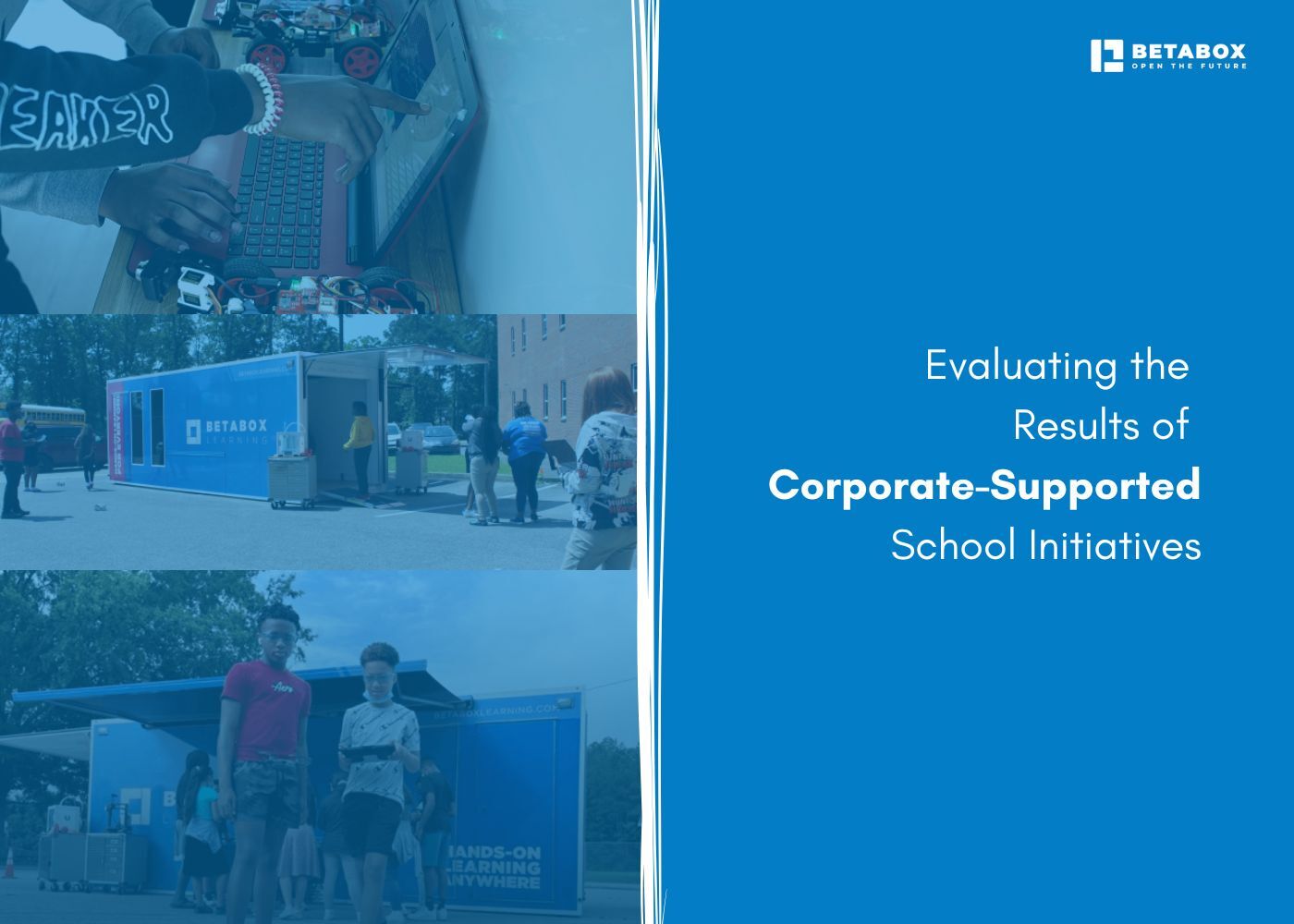
Corporate involvement in K-12 can unlock resources, technology, and career exposure that many schools struggle to provide on their own.
The question districts, principals, and CSR teams ask is simple: did the initiative move the needle for students and teachers, and how do we know?
This guide shows how to evaluate corporate school partnerships, from planning the right indicators to reporting credible results that inform next-year decisions. It is written for district CTE leaders, principals, instructional coaches, and CSR managers who want rigorous methods without academic jargon.
Definition and scope.
Corporate-supported school initiatives are collaborations where a business supplies funding, expertise, volunteers, equipment, curriculum, or experiences that enhance instruction or enrichment. Typical formats include:
A single partnership may blend these formats, which is why evaluation should track both instructional quality and student outcomes rather than only spend.
Why companies participate.
Corporate social responsibility in education can align community investment with future workforce goals. Executives care about equitable access, reputation in the community, and talent pipelines.
Schools care about closing resource gaps, building teacher capacity, and helping students see real careers. When the partnership is designed well, both sides benefit, and both sides get better data for their boards and communities.
What schools should expect.
Responsible CSR partners will align with district goals, accept independent evaluation, and support delivery that is feasible on campus.
Betabox’s public materials, for example, emphasize school-based delivery that reaches entire campuses in a day, with a design that can show changes in STEM interest and knowledge in short sessions, which makes evaluation practical during a busy school year.
The fastest way to credible evaluation is to plan backward from decisions. Start with the question the superintendent or board will ask, did this improve access, experience, learning, and readiness for more rigorous work. Then pick fit-for-purpose methods.
Map inputs, activities, outputs, and outcomes. Keep it one page. If the activity is a one-day mobile lab, the output might be sessions delivered and students reached. Near-term outcomes might be increased interest and content knowledge. Longer term outcomes might be higher enrollment in advanced coursework or work-based learning. Put responsible owners and data sources next to each outcome.
A single score rarely tells the story. Use a small, balanced set:
Short pre-post checks can be powerful when the program is short. Betabox publishes examples of one-hour experiences that can show changes in interest and knowledge, which is practical for schools that cannot carve out weeks of testing.
Connect short-term signals to next-term decisions, for example, if interest rises and more students select an engineering elective, flag that for master scheduling.
Name the instruments, the timing, the sample, the consent, and the privacy rules. Decide what will be public and what stays internal. Require a joint sign-off between district and partner before publishing.
One executive slide per pillar, access, experience, learning, pathways, capacity, equity, with two visuals and one short narrative that states what changed, for whom, and what you will do next. Archive the technical appendix, instruments, and codebooks for transparency.
When designed against a logic model and monitored with the KPI set above, corporate support in education can produce tangible gains.
Improved learning resources.
Corporate funding can outfit classrooms with kits, consumables, and software that many budgets cannot sustain alone. When those resources arrive in a turnkey format that teachers can deploy quickly, classroom transfer improves.
Workforce readiness programs.
Industry-aligned projects help students practice real design decisions, tradeoffs, and teamwork. That improves confidence and gives teachers concrete artifacts to assess. Betabox describes a suite of hands-on projects and mobile experiences designed for rapid classroom transfer with coaching and supplies, which is crucial for first-year or out-of-field teachers.
Bridging educational gaps.
On-campus delivery lowers logistical barriers, so rural or low-wealth schools can access the same experiences as urban campuses. Betabox materials frame this as closing the STEM opportunity gap through on-site enrichment and industry partnerships that can be funded for underserved communities.
Evidence that short-format experiences can move the needle.
Betabox’s public evaluation summary notes a measurable instant boost in STEM interest and a statistically significant improvement in technology content knowledge after a one-hour session. That does not replace long-term evaluations, but it shows why short pre-post designs are useful in school settings.
Over-commercialization risk.
Protect instructional time and student attention. Limit branding to reasonable acknowledgments. Require that any content aligns with academic standards and instructional best practice.
Equitable distribution of support.
Publish selection criteria for campuses, for example Title I status, rural isolation, staffing constraints, and rotate access across clusters to avoid concentrating benefits in one school.
Sustaining long-term benefits.
One-day impact is not enough. Plan the handoff from the special event to classroom practice. In Betabox’s model, the combination of on-site experiences, classroom project boxes, and an educator supplies platform is designed to sustain hands-on instruction after the event day. That system design matters for durable change.
Data quality and privacy.
Pre-post surveys are only useful if items are aligned and response rates are high. Keep instruments short, use classroom time, and follow district privacy rules.
Attribution.
Many things change in a school year. Be honest about contribution rather than claiming full causation. Use comparison groups when possible, even simple matched classes.
Start with the district’s strategic plan. Map exactly which priorities the partnership supports, for example, middle school career awareness, ninth grade on-track, or CTE concentrator pathways. Keep scope small enough to deliver with quality, then expand when evidence shows it is working.
Publish the logic model and the KPI list in the kickoff. Share the calendar for data collection. Give the school a draft of any public report before release. If a metric does not move as expected, document the plausible reasons, for example a schedule disruption, and state the correction that will be made next cycle.
Use quick health checks, session quality rubrics, and minute-by-minute attendance to catch problems early. Keep a simple dashboard that both parties can see. Tie the dashboard to decisions, for example, add an extra session for a grade level with lower access, or schedule an extra planning hour for teachers who want help adapting a project.
A great event day is the start, not the end. Provide ready to run units, consumables, and a coaching pathway so teachers can reproduce the experience in their classrooms. Betabox highlights a multi-component approach, field trips, project kits, workshops, and an educator platform, so districts can sustain instruction with the same pedagogy students experienced.
For district CTE directors and assistant superintendents.
Focus on coverage, equity, and capacity. Require campus-level reporting that shows who was reached, how teachers will use the materials next, and how many students enrolled in follow-on courses. Tie funding renewals to these signals.
For principals and STEM coordinators.
Anchor the schedule to your bell times and testing windows. Use two or three classroom artifacts or exit tickets you already grade. Ask for a one page report per grade level that you can take to your school improvement team.
For instructional coaches.
Capture teacher practice shifts. Use short observation rubrics that track student talk, hands-on time, and the use of formative checks. Set one small practice goal per teacher and revisit it in two weeks.
For CSR managers and foundation officers.
Require a common KPI set across grantees so you can roll up results. Publish your equity approach and your data ethics in plain language. Put a sustainability clause in the agreement that funds materials teachers can keep using.
A regional employer funds a three-part partnership in a rural district, a one day on-campus experience for grades 6 to 8, two teacher workshops, and classroom project boxes for science units. The logic model sets KPIs at each layer.
Access will be measured by participation rates and subgroup coverage. Experience will be measured by student engagement items and teacher NPS. Learning will be measured by a three-item knowledge check.
Pathways will be measured by sign-ups for the robotics club and ninth grade course requests. Capacity will be measured by a short teacher confidence scale. Equity will be monitored by comparing results for rural schools with the district average.
The data plan reserves the last five minutes of each session for the student check, with QR and paper options to reach all students. Two weeks later, coaches visit classrooms to support use of the project boxes.
At semester, the team pulls course request data. The final report shows that access exceeded 90 percent for target grades, student interest rose, teachers reported higher confidence to run hands-on activities, and robotics club sign-ups doubled at two campuses.
One school fell short on access due to a weather closure, so the partner funds a make-up day in the next quarter.
Evaluating corporate funding for schools is not a paperwork exercise. It is how educators and funders learn what to scale, what to change, and how to guarantee that every hour and dollar translates into better instruction and stronger student futures. Use a simple logic model, a layered KPI set, short and valid instruments, and transparent reporting.
Protect equity and privacy. Invest in the classroom handoff so impact outlives the event. When that cycle runs well, educational partnerships with businesses become a reliable engine for school program outcomes corporate support can be proud of, year after year.
If you want a partner that delivers on-campus experiences, teacher-ready projects, and evaluation that fits school reality, you can start an application and map a district blueprint with the Betabox team.
Considering a corporate partnership built for equity and measurable impact?
You can book a partnership conversation with Betabox to plan an evaluation-ready activation in your community.
What are corporate-supported school initiatives?
They are collaborations where a company contributes money, expertise, volunteers, equipment, curriculum, or experiences to strengthen instruction or enrichment in K-12 settings. The most common formats include funding for labs, workforce readiness projects, on-campus experiences, and professional learning for teachers.
How do businesses benefit from corporate school partnerships?
They meet CSR goals, support equitable access, and strengthen future talent pipelines. Credible evaluation also gives companies clear community impact narratives for boards and stakeholders, which supports sustained funding decisions.
How can schools measure the success of corporate funding programs?
Plan a logic model, choose layered KPIs, run short pre-post checks for each session, and track follow-on signals like course requests or club sign-ups. Combine numbers with teacher reflections and student artifacts so results translate to instructional decisions.
What are the key challenges in corporate support in education?
Guard against over-commercialization, ensure equitable campus selection, protect privacy, and plan for sustainability beyond the event. Be clear about contribution versus causation and publish the rules everyone will follow.
What is the impact of corporate sponsorship on student outcomes?
Short-format experiences can produce immediate gains in interest and content knowledge, while sustained resources and teacher support may drive longer-term changes like increased enrollment in advanced coursework. Betabox’s public summary provides an example of short-term gains measured within one hour on campus.
How can schools assess the long-term effectiveness of corporate initiatives?
Follow cohorts into the next term and year. Look for persistence signals such as pathway enrollment, credential attempts, and performance on authentic tasks. Keep equity checks in every report so gains are shared across all student groups.
Are corporate-funded school programs sustainable?
They can be, when partners budget for classroom handoff materials and teacher coaching, and when districts braid funding with other sources after the pilot. Models that pair on-campus activation with classroom supplies and an educator platform are designed to keep learning going after the event day.


Ready to learn how Betabox resources can be implemented at your school or District?
Book a Blueprint Call

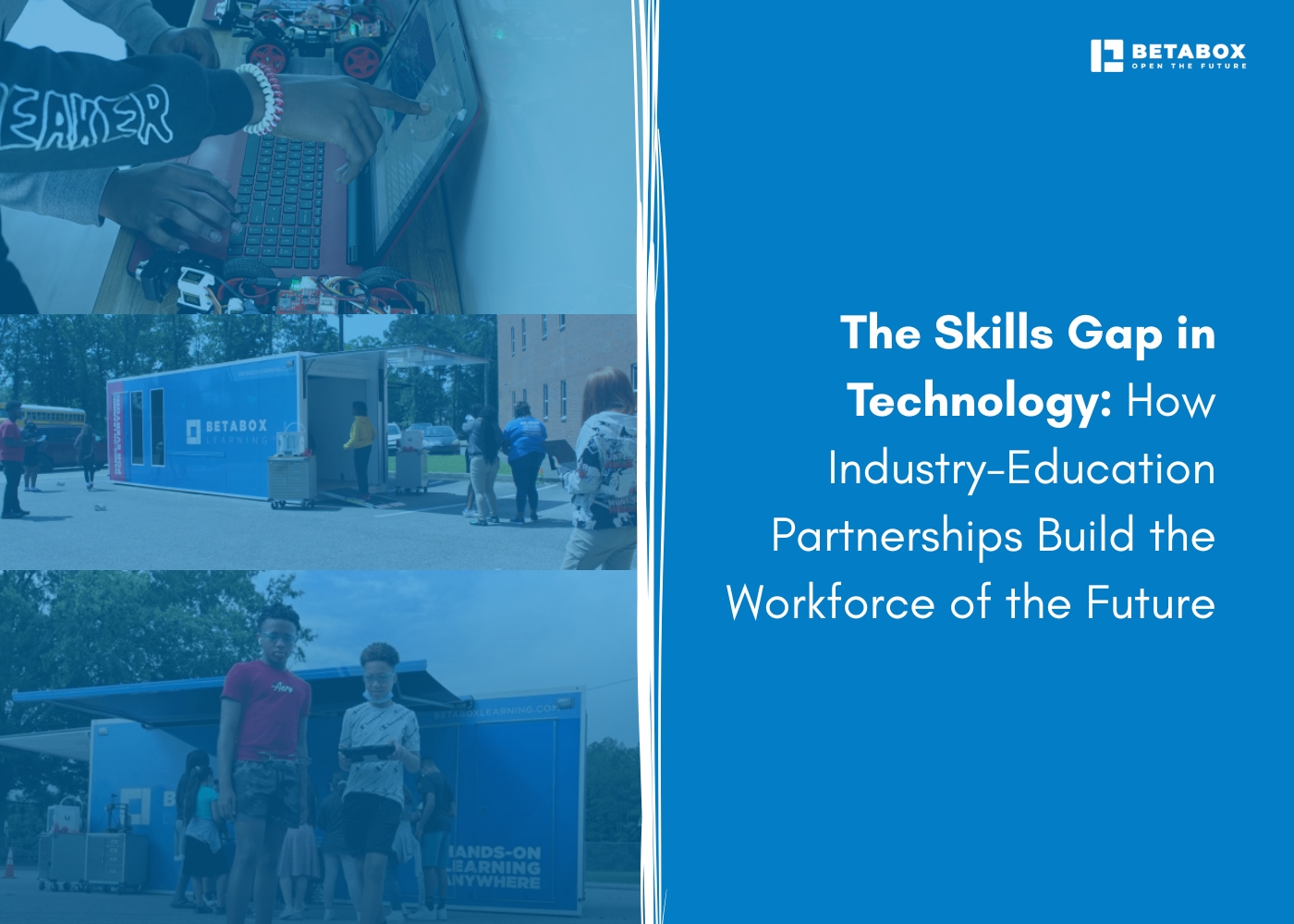

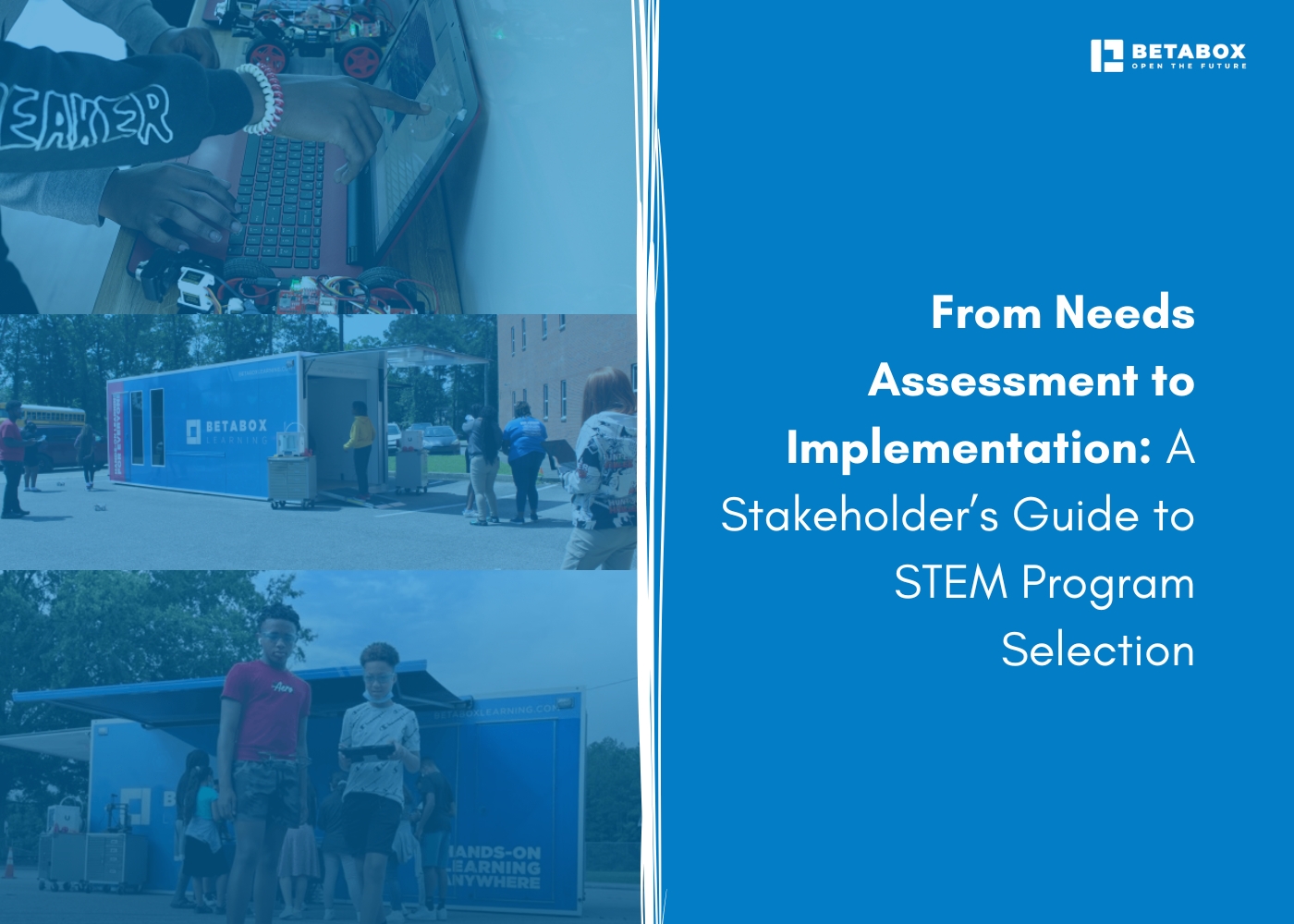

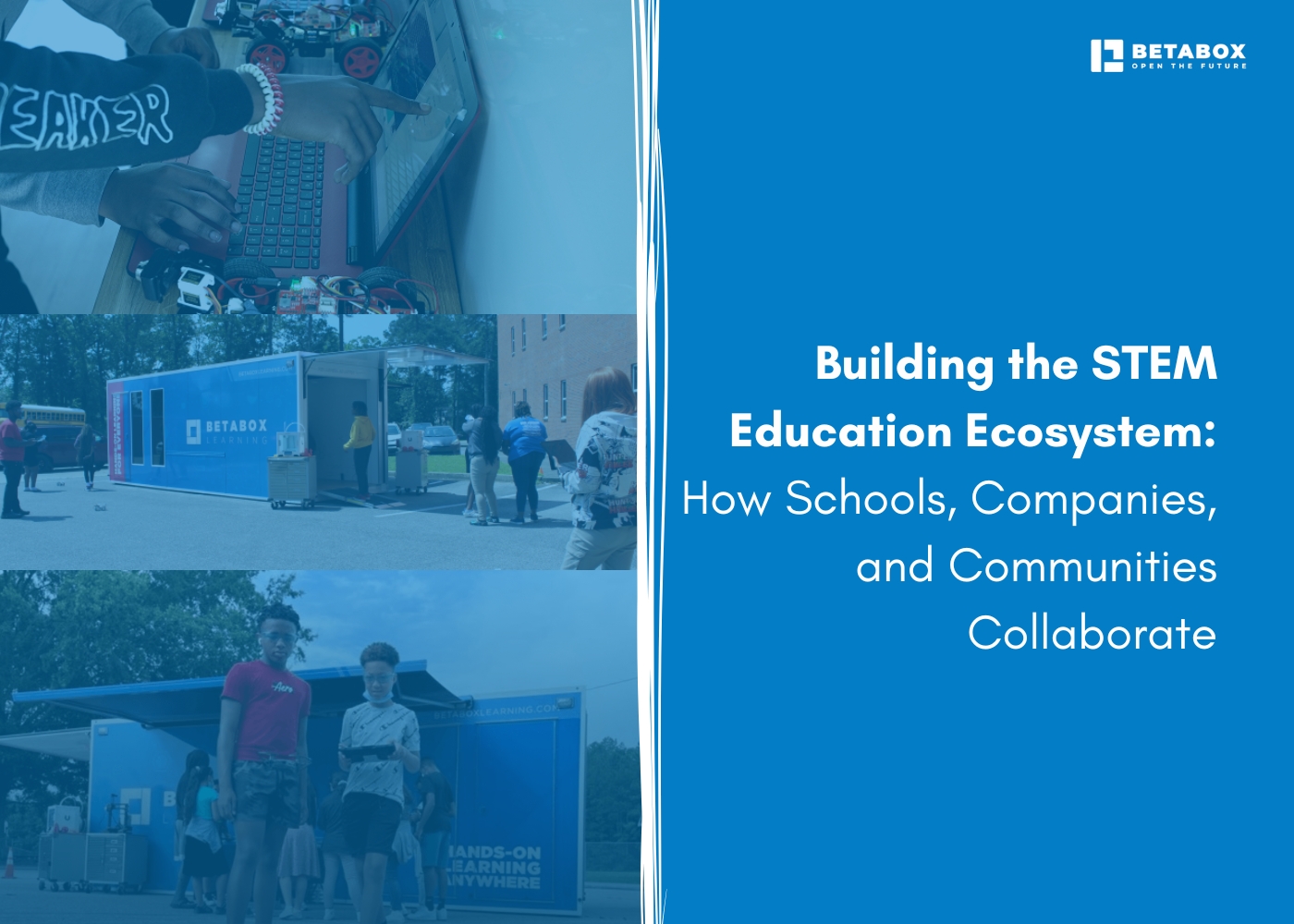

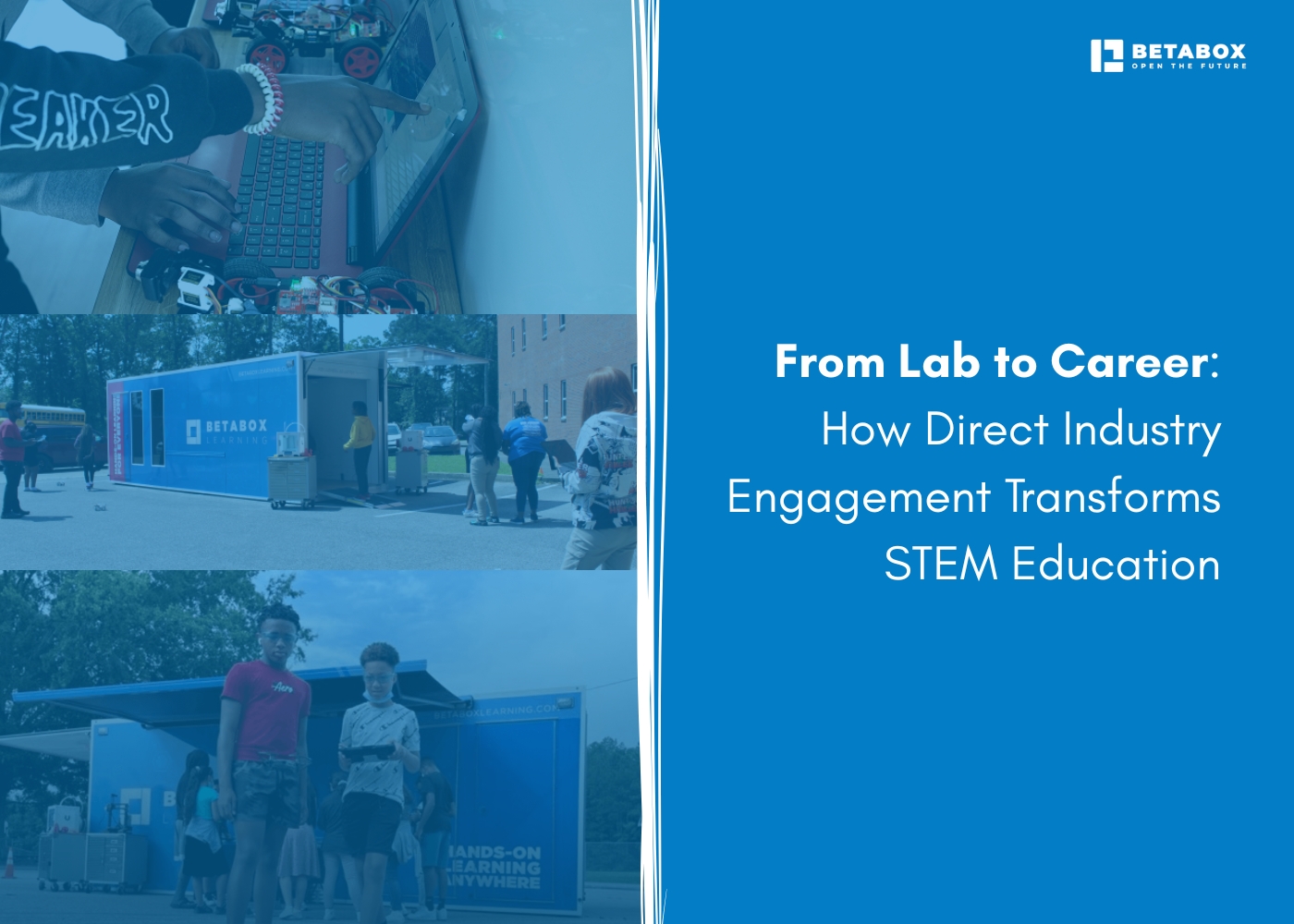

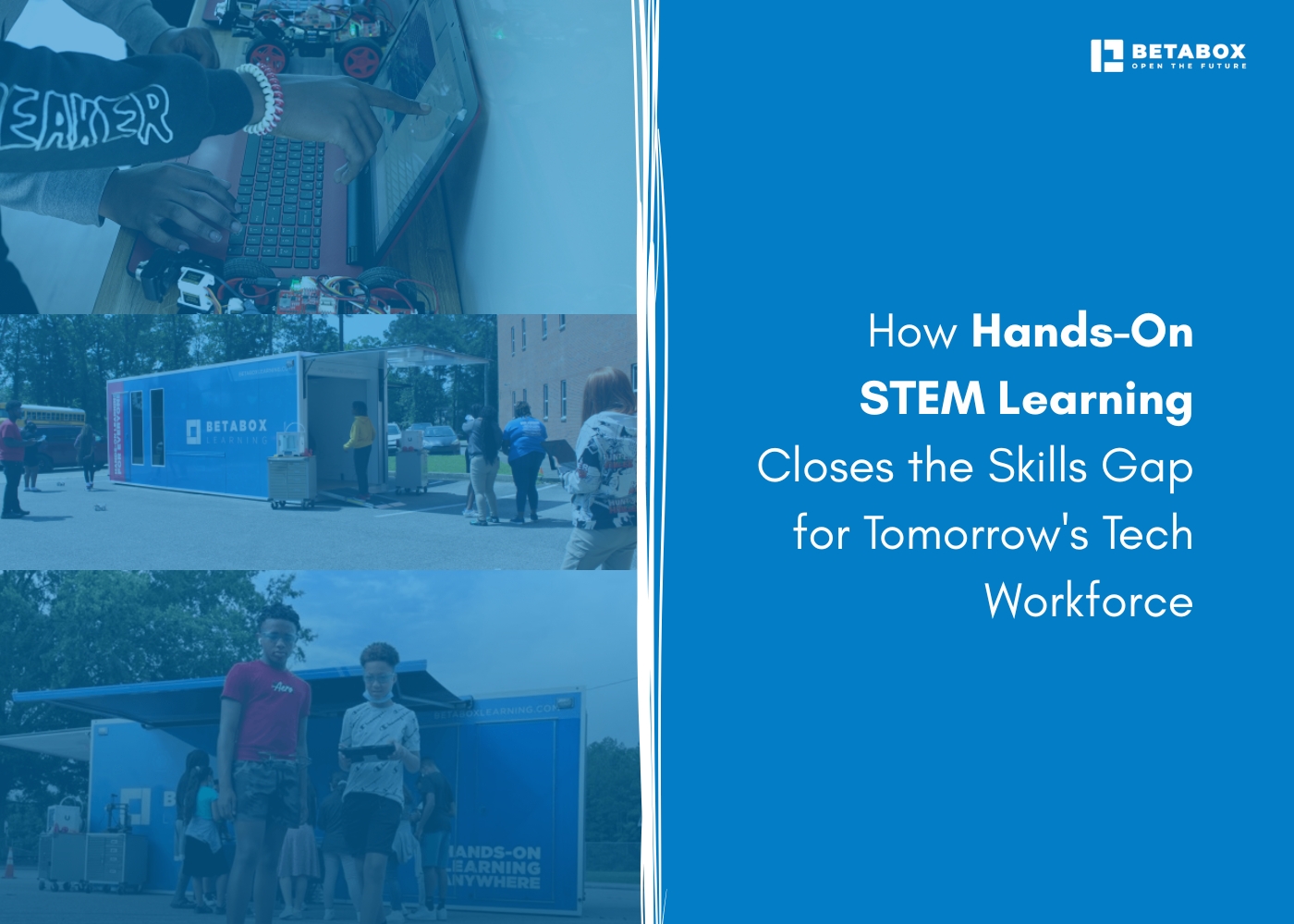

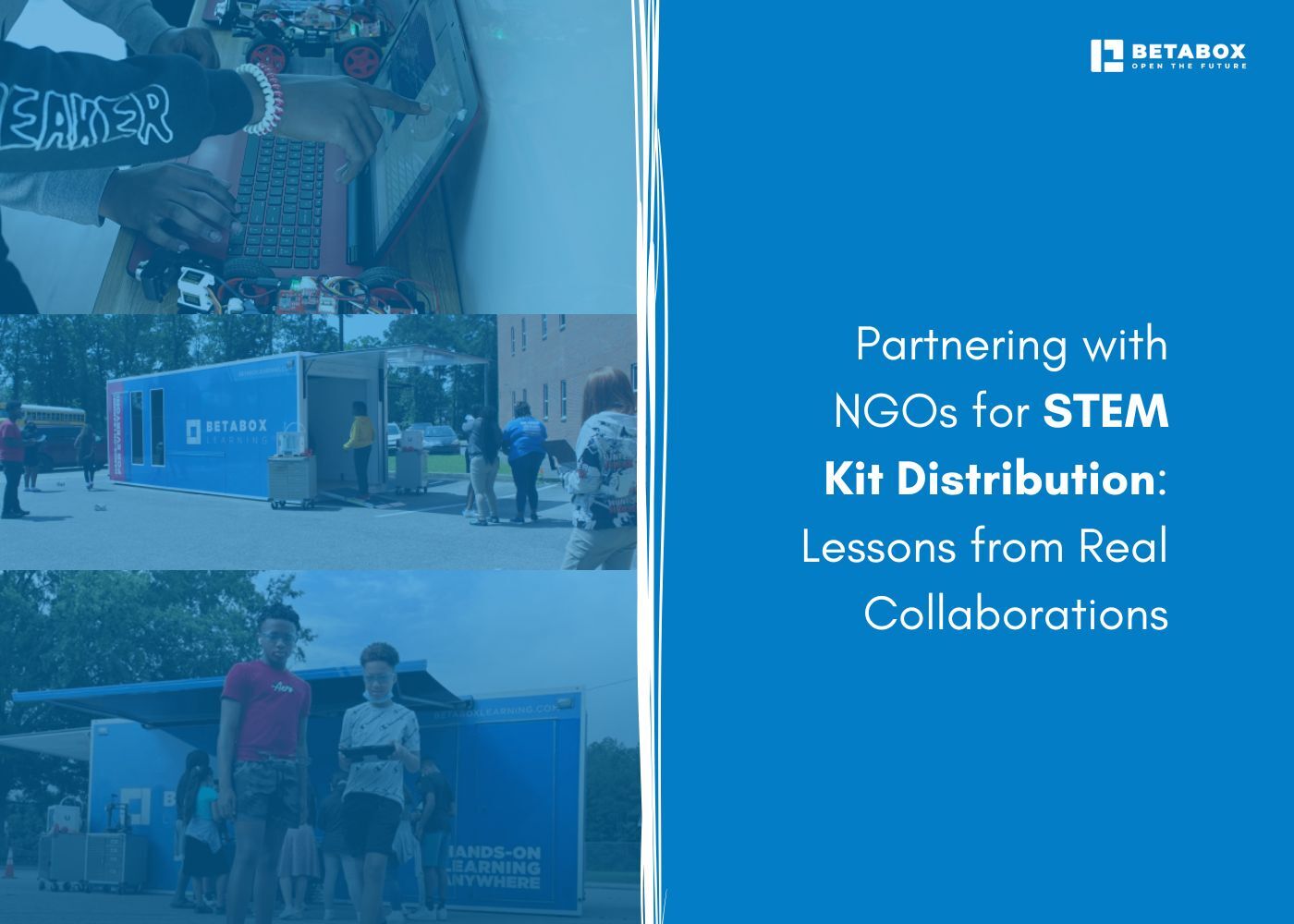

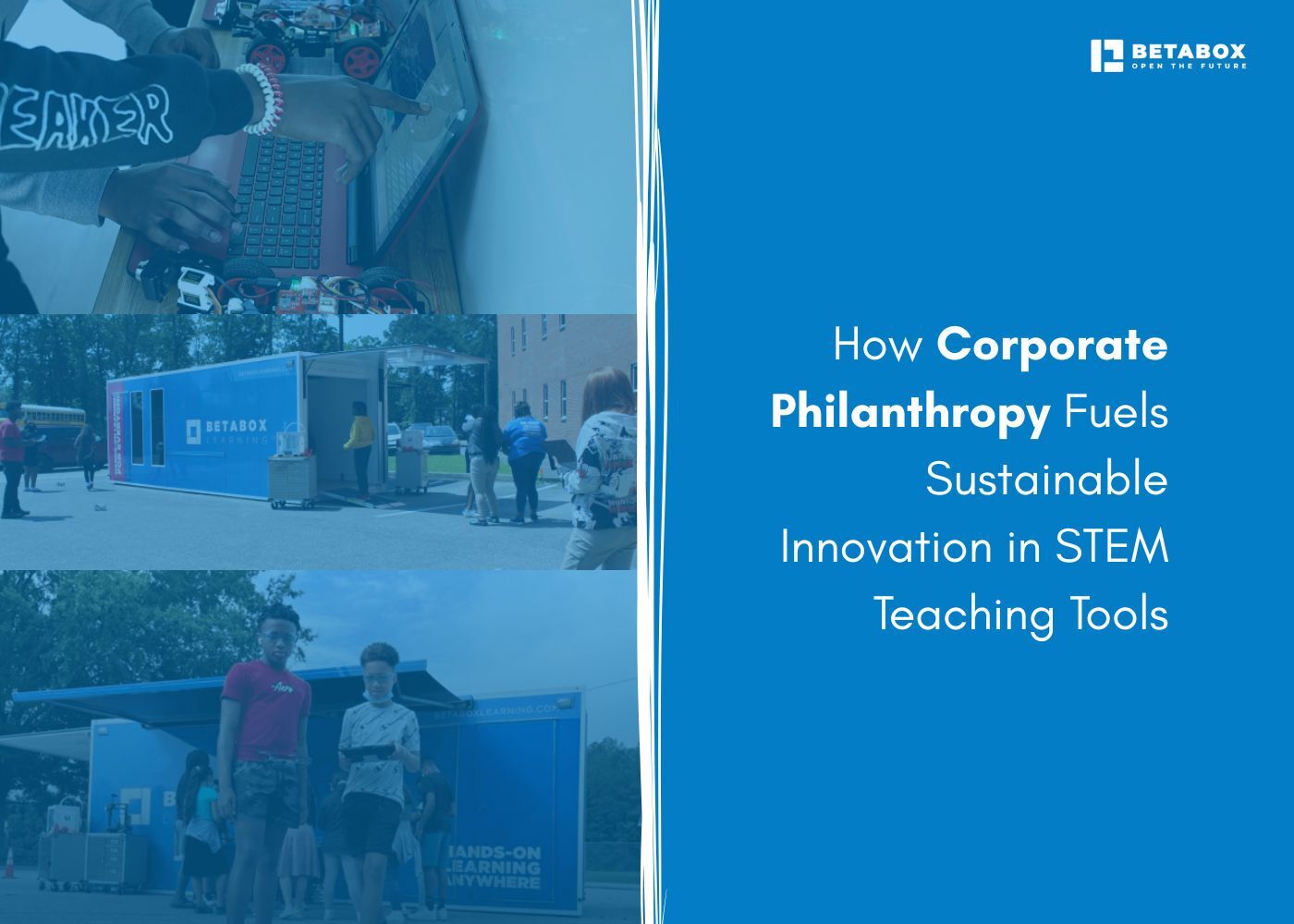

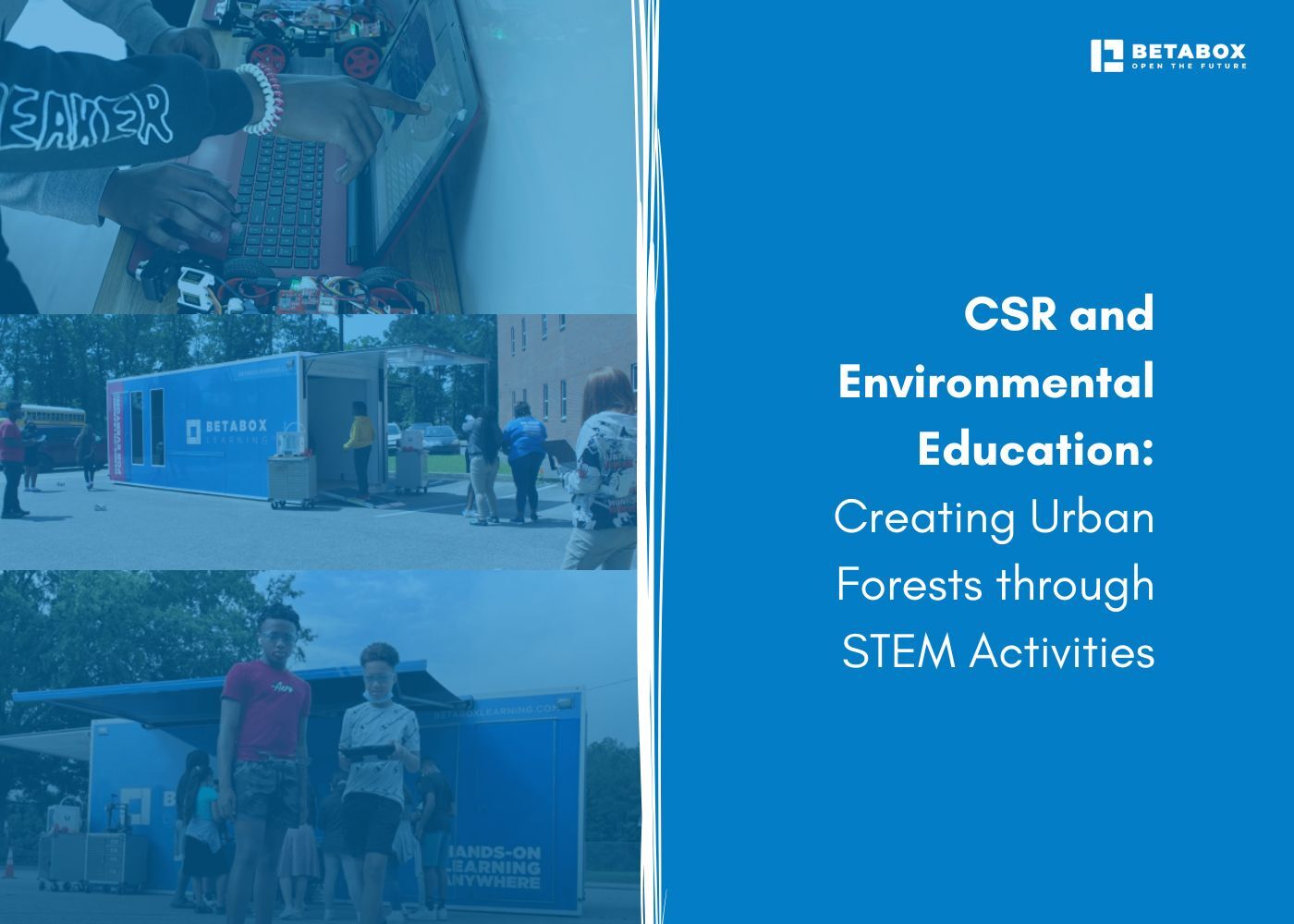

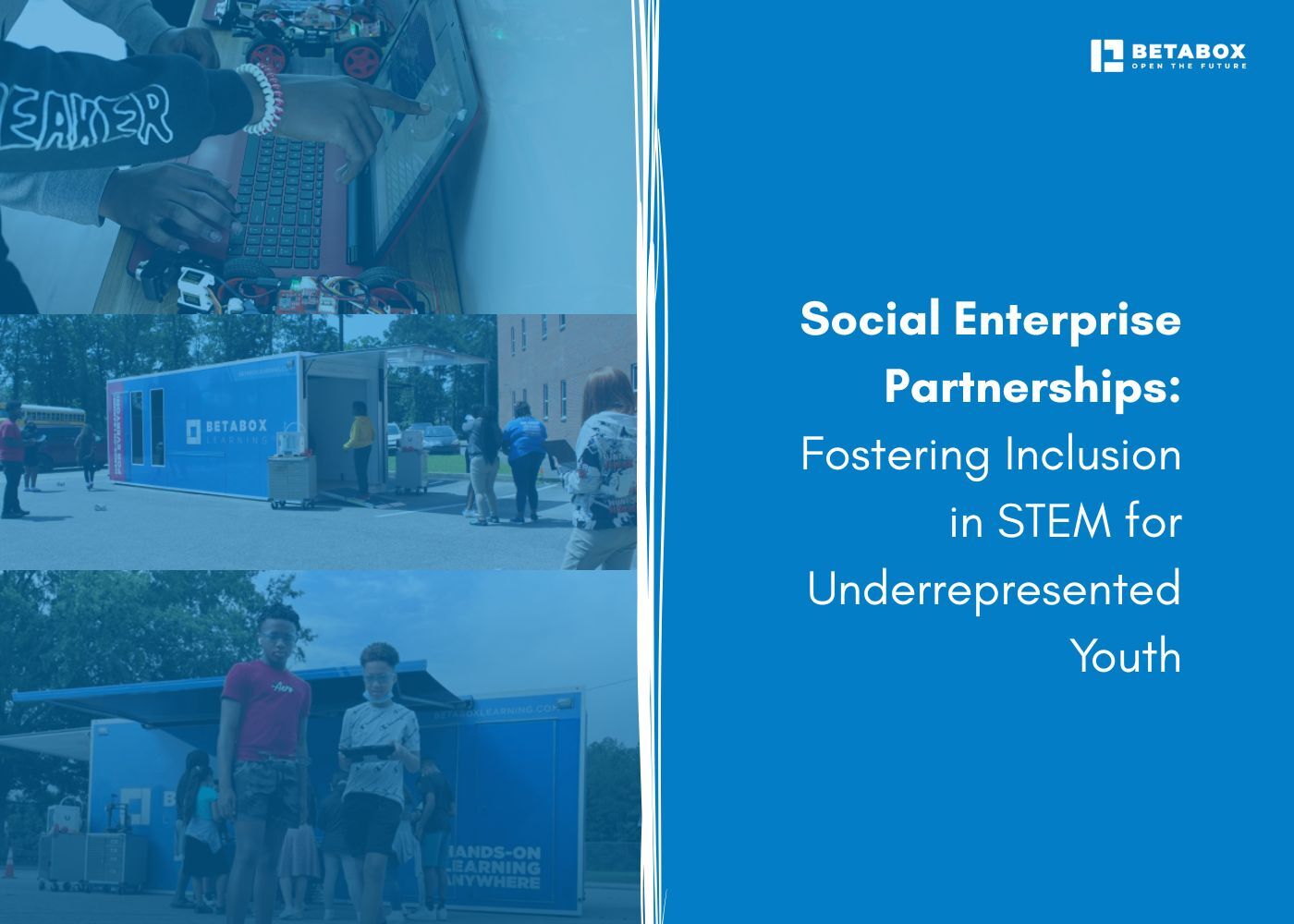

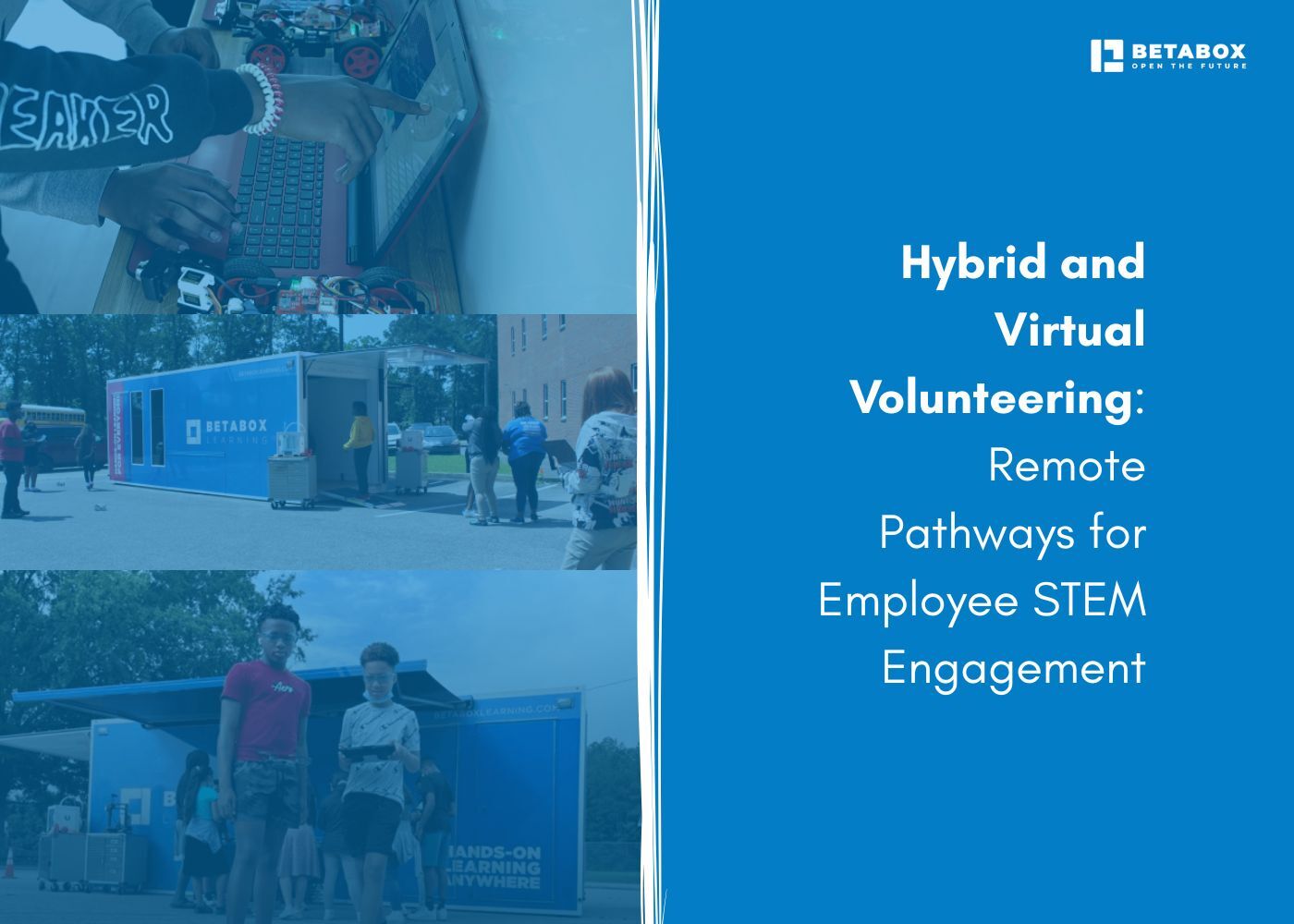

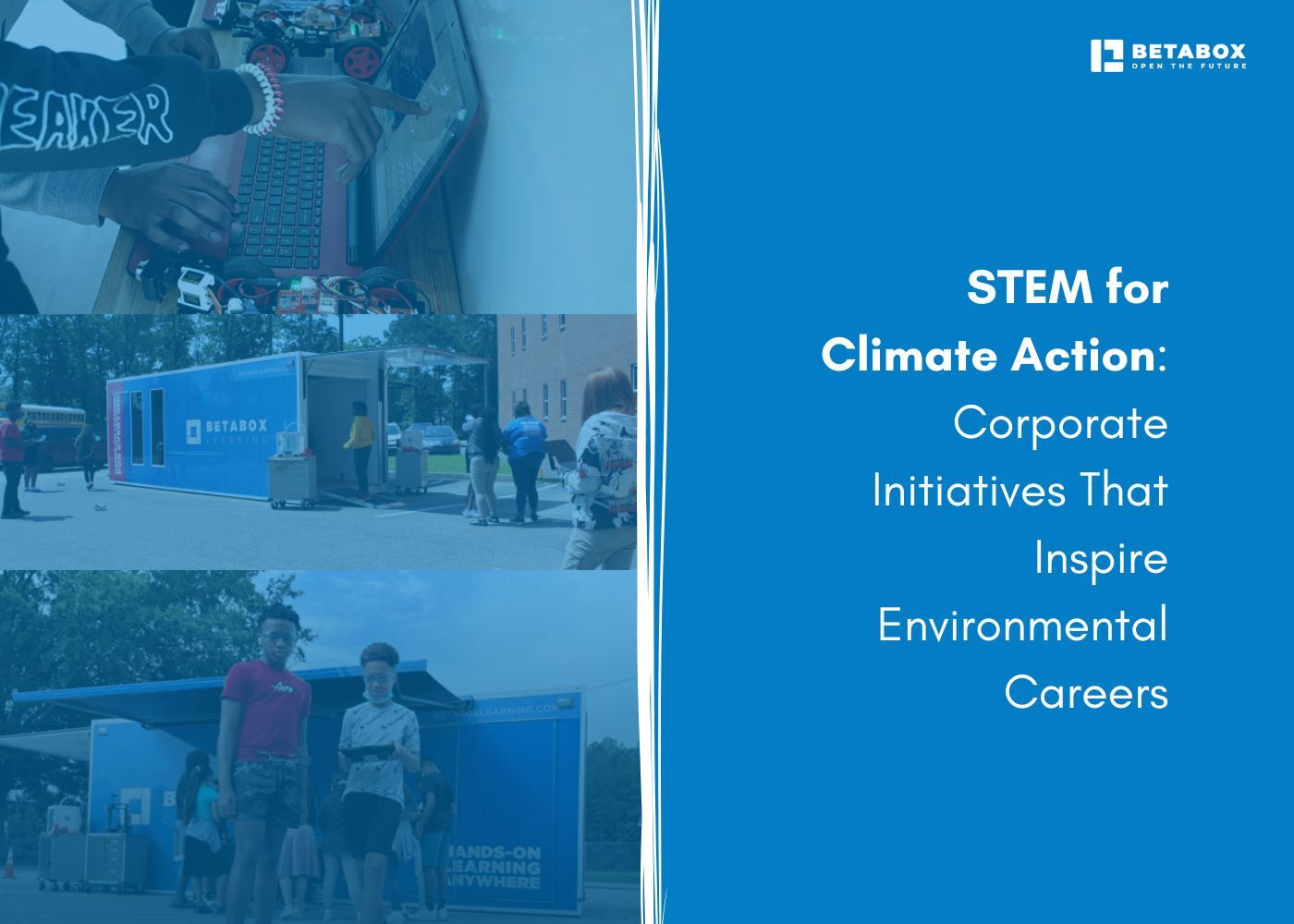



At Betabox Learning, we are passionate about making hands-on STEM curricula accessible to all students.

Join our newsletter to stay in the loop on all things Betabox and the future of STEM education.
By submitting your email address, you agree to our Privacy policy and Terms of Service. You can unsubscribe any time via the link in your email.
© 2025 Betabox. All Rights Reserved
